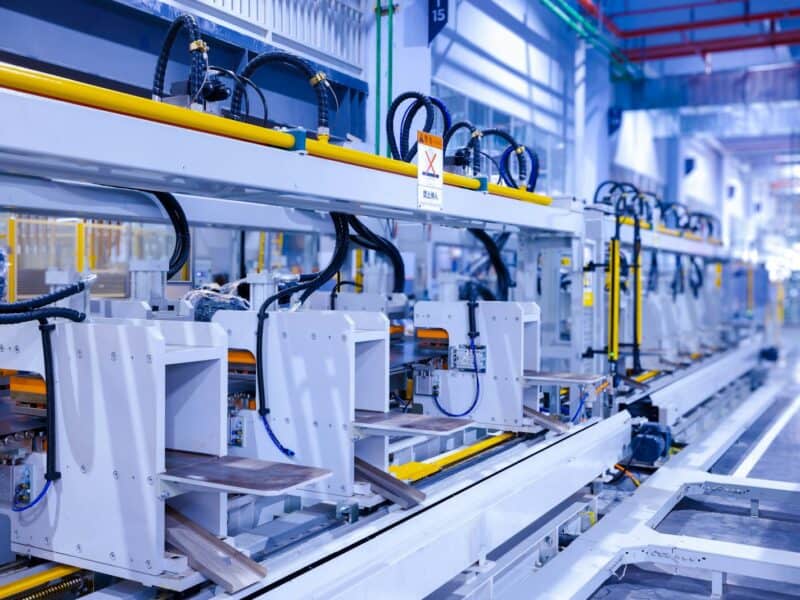The Integration of Telematics in Construction
In the ever-evolving landscape of the construction industry, technology continues to play a pivotal role in enhancing efficiency and productivity. One such technological advancement making waves in construction equipment management is telematics. This smart technology integrates telecommunications and informatics to provide real-time data on the usage, performance, and health of construction equipment.
Revolutionizing Equipment Monitoring
Telematics has emerged as a game-changer, allowing construction companies to remotely monitor and manage their fleets of heavy machinery. Through GPS tracking and sensors embedded in the equipment, telematics provides a wealth of data, including location, fuel consumption, engine health, and even operator behavior. This real-time information empowers construction managers to make informed decisions, optimize operations, and proactively address maintenance needs.
Minimizing Downtime and Extending Lifespan
One of the key benefits of telematics in construction is its role in preventive maintenance. The system generates alerts and notifications based on equipment diagnostics, enabling timely maintenance interventions. By addressing potential issues before they escalate, construction companies can minimize downtime, reduce repair costs, and extend the lifespan of their equipment. This proactive approach to maintenance is particularly crucial in an industry where equipment reliability is synonymous with project success.
Fuel Efficiency and Cost Savings
Telematics provides invaluable insights into fuel consumption patterns, allowing construction companies to optimize routes, reduce idle times, and improve overall fuel efficiency. By leveraging this data, companies can implement strategies to cut fuel costs, contributing to significant long-term savings. As the construction industry increasingly emphasizes sustainability and cost-effectiveness, telematics proves to be a win-win solution.
Enhanced Job Site Safety
Telematics goes beyond tracking equipment; it also monitors operator behavior. This aspect is particularly vital for ensuring job site safety. Construction managers can receive real-time alerts for unsafe practices, such as speeding or sudden accelerations. By promoting responsible and safe operation of equipment, telematics contributes to a safer work environment for construction crews, reducing the risk of accidents and injuries.
Efficient Equipment Utilization
Telematics provides construction companies with valuable insights into equipment utilization. Managers can identify underutilized assets, optimize equipment allocation for various projects, and even make informed decisions about expanding or downsizing their fleets. This level of visibility into equipment usage patterns enables construction companies to maximize productivity and allocate resources effectively, leading to improved overall efficiency.
Integration with Construction Management Software
Telematics doesn’t operate in isolation; it seamlessly integrates with construction management software. This integration allows for a holistic view of construction operations by combining telematics data with project management, scheduling, and resource allocation information. The result is a comprehensive platform that empowers construction managers to make data-driven decisions, streamline operations, and enhance overall project performance.
Telematics and the Horizontal Directional Drill
As construction companies explore the benefits of telematics, the horizontal directional drill (HDD) is a notable player in this technological transformation. Telematics can be especially advantageous for HDD operations, providing data on drilling performance, ground conditions, and equipment health. Construction managers looking for a horizontal directional drill for sale equipped with telematics capabilities can gain a competitive edge in managing trenchless drilling projects.
The Continued Evolution of Telematics in Construction
The integration of telematics in construction is an ongoing process, with continuous advancements on the horizon. Future trends may include machine learning algorithms that predict equipment failures with even greater accuracy, augmented reality interfaces for enhanced operator training, and the incorporation of telematics data into Building Information Modeling (BIM) for comprehensive project planning. As construction companies embrace these innovations, telematics is set to become an indispensable tool for shaping the future of the construction industry.
In conclusion, telematics is reshaping the construction industry by providing real-time data that empowers construction companies to optimize operations, enhance safety, and make informed decisions. From preventive maintenance and fuel efficiency to job site safety and equipment utilization, the benefits of telematics are vast. As the construction industry continues to embrace smart technology, the integration of telematics, especially in equipment like the horizontal directional drill, is a testament to the efficiency and effectiveness that this technology brings to construction operations.



